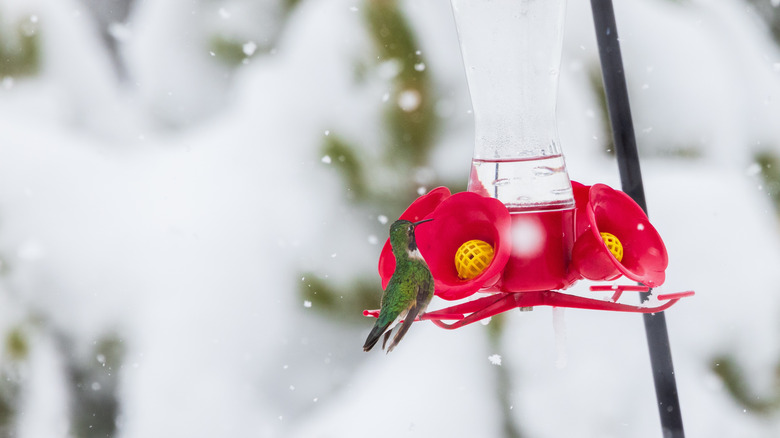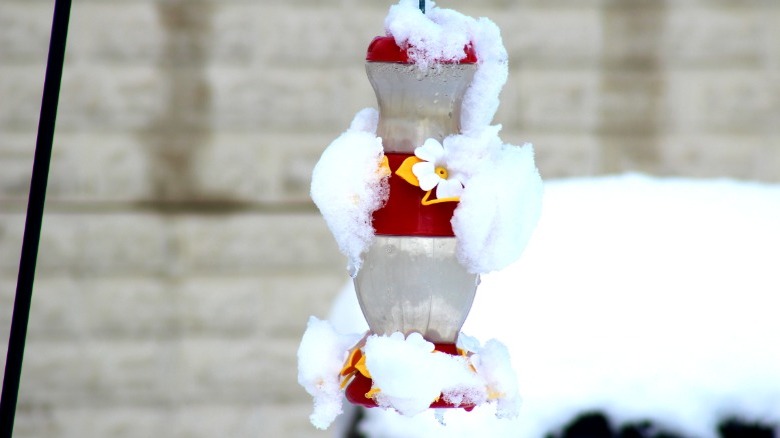Temps Are Dropping: How Often Should You Change Hummingbird Feeder Nectar This Winter?
We may receive a commission on purchases made from links.
The brilliant, shiny bodies of hummingbirds are often associated with the bright colors and strong sunshine of spring and summer. This is particularly true in many parts of North America because they are known for flitting about in summer, then migrating south at the first signs of colder weather. So, if hummingbirds disappear to more tropical climates in the winter, does that mean you should pack up your feeder until the return of spring? Not necessarily! Some hummingbirds may not migrate south if they are very young, old, or are unable to depart due to illness. In these cases, keeping your feeder out could help these vulnerable birds to survive the winter when their food is scarce and maintaining energy is vital.
In hot summer temperatures, hummingbird feeders should be changed every 1 to 2 days to prevent dangerous mold and bacterial growth. In winter, feeders may not become dirty as quickly, but it is still incredibly important that you change out the nectar in your feeder at least once per week when temperatures are below 60 degrees Fahrenheit. This is because the hummingbirds may come to rely on your feeder during the cold months and, if the nectar is empty or has gone bad, they could suffer from a lack of food. If you'd like to look after these sweet flying creatures this winter, why not look into how weather affects hummingbird feeders and essential tips you should know for keeping it clean and refreshed?
Refreshing hummingbird feeders weekly in winter
There are a few important steps that come with owning a hummingbird feeder which are just as important in winter. First, make sure to clean your feeder whenever you change out the nectar or if you notice mold or an increase of pests around it. A few key mistakes to avoid when cleaning your hummingbird feeder include using soapy water — which can leave behind a potentially dangerous film — and allowing the nectar to sit for too long without changing. Instead, try using a mixture of water and hydrogen peroxide or a diluted vinegar solution every few days to keep your feeder sparkling clean.
Along with the usual methods for keeping your feeder clean and full, there are a few winter-specific tasks that are important for the health of your local hummingbirds. If you live in an area that gets freezing temperatures, you will need to keep an eye on the nectar to make sure it doesn't freeze. You can do this by purchasing a warmed option such as this Tryitsbest Heated Hummingbird Feeder or by keeping multiple feeders on standby to swap out whenever one freezes. A heated feeder itself may also attract hummingbirds with its warmth, but of course, it will need to be cleaned more often. Frozen nectar is no help to hummingbirds, so it can also be a good idea to place the feeder near a window so that you can easily check that there is plenty of liquid nectar available. Choosing one in bright colors which will stand out against the winter landscape is a smart way to attract hummingbirds and help them conserve their energy.

